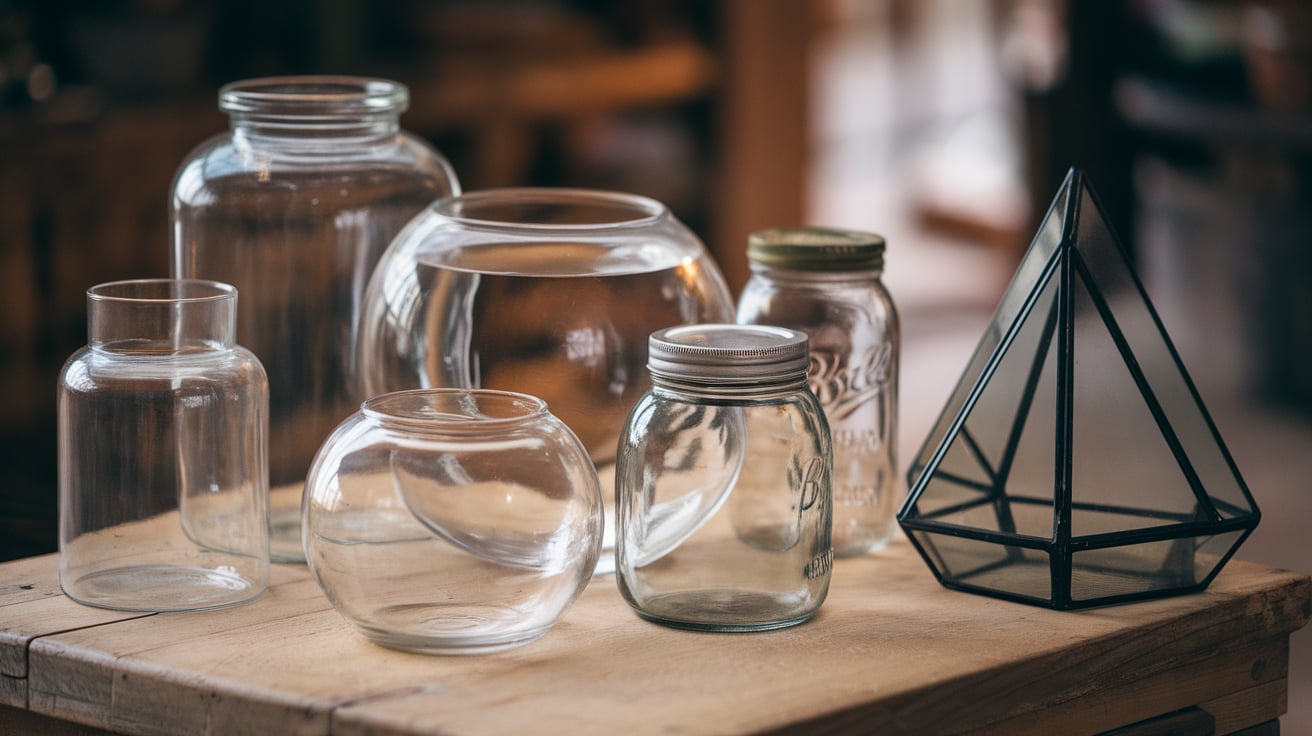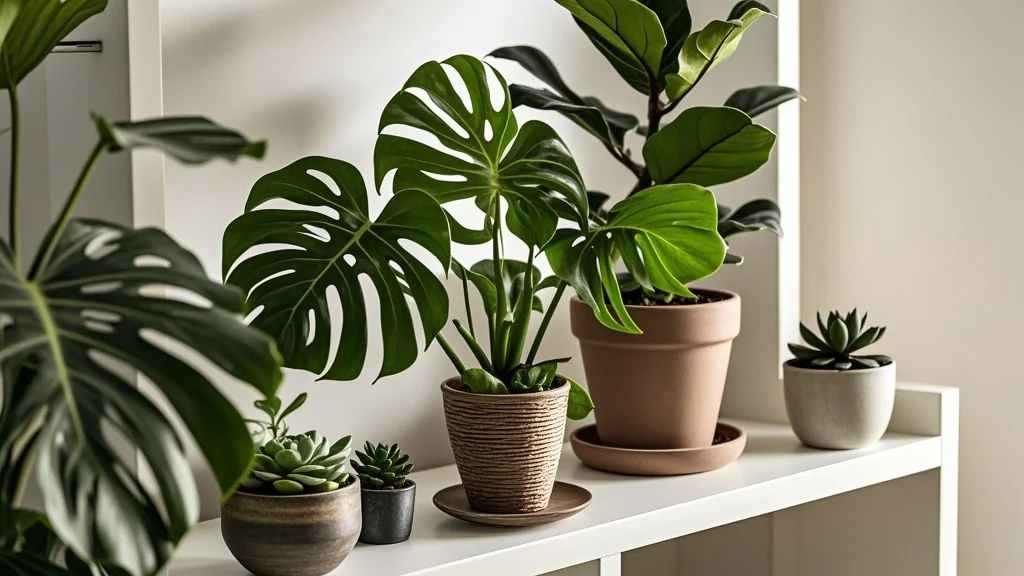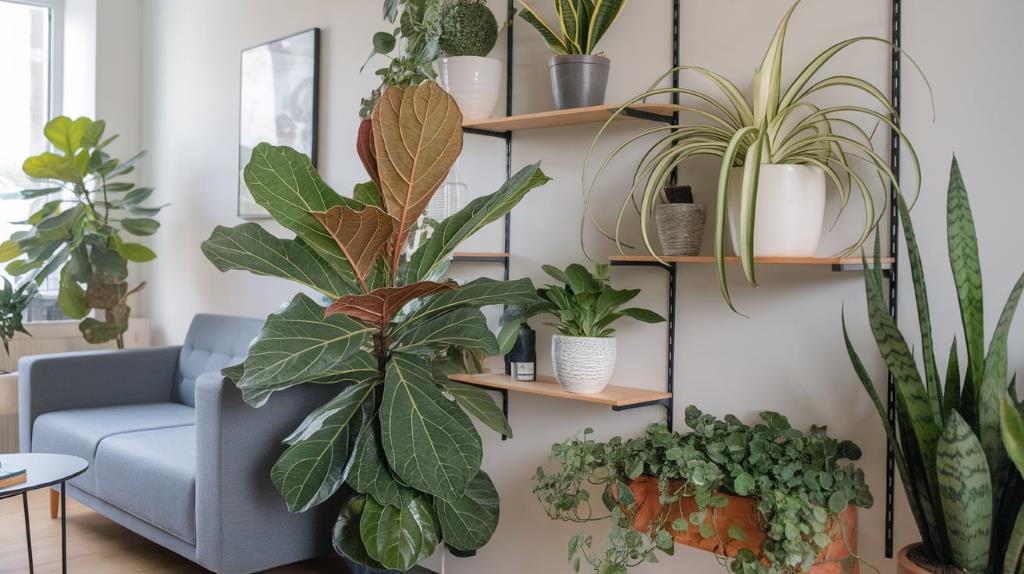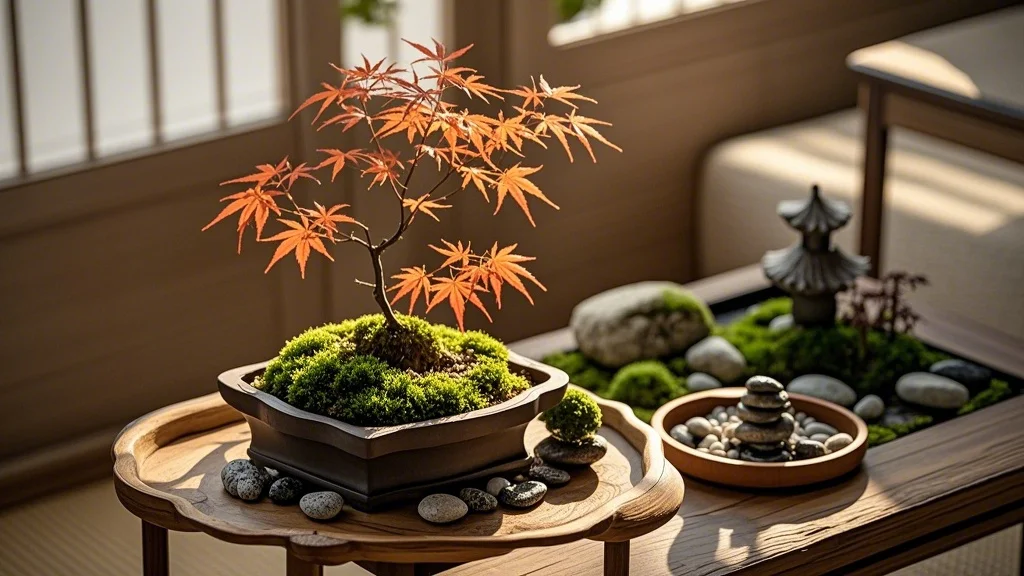For urban dwellers with limited space, terrariums offer a perfect solution to bring nature indoors. These miniature ecosystems not only add a touch of greenery to your home but also serve as beautiful, low-maintenance decorative pieces. In this comprehensive guide, we’ll explore how to create, maintain, and display stunning terrariums that maximize impact while minimizing space requirements.
Contents
- 1 What is a Terrarium?
- 2 Benefits of Terrariums for Small Spaces
- 3 Choosing the Right Container
- 4 Selecting Plants for Your Terrarium
- 5 Essential Materials
- 6 Step-by-Step Guide to Creating Your Terrarium
- 7 Maintaining Your Terrarium
- 8 Troubleshooting Common Issues
- 9 Creative Display Ideas
- 10 Advanced Terrarium Techniques
- 11 Conclusion
What is a Terrarium?
A terrarium is a sealed or partially sealed transparent container housing a self-sustaining plant ecosystem. These miniature gardens recreate natural environments in a controlled setting, allowing plants to thrive with minimal intervention.
Types of Terrariums
- Closed Terrariums: Fully sealed containers that create a self-sustaining water cycle.
- Open Terrariums: Partially open containers suitable for plants that prefer lower humidity.
Benefits of Terrariums for Small Spaces
- Space-efficient: Ideal for apartments, offices, or any area with limited room.
- Low maintenance: Require minimal care once established.
- Versatile decor: Can be customized to fit various interior design styles.
- Air-purifying: Many terrarium plants help improve indoor air quality.
- Educational: Great for observing plant growth and ecosystem dynamics.
Choosing the Right Container

The container is the foundation of your terrarium. Consider these factors when selecting:
- Size: Choose based on available space and desired plant arrangement.
- Material: Glass is most common, but plastic can work for lighter setups.
- Shape: Spheres, cylinders, or geometric designs offer unique aesthetics.
- Opening size: Ensure it’s large enough for easy planting and maintenance.
Popular Container Options
- Glass jars or bowls
- Fishbowls
- Mason jars
- Recycled light bulbs (for micro terrariums)
- Geometric glass terrariums
Selecting Plants for Your Terrarium
Choose plants that thrive in high humidity and have similar care requirements. Some excellent options include:
For Closed Terrariums
- Fittonia (Nerve Plant)
- Peperomia
- Moss varieties
- Miniature ferns (e.g., Button Fern)
- Selaginella (Spike Moss)
For Open Terrariums
- Succulents (e.g., Echeveria, Sedum)
- Air plants (Tillandsia)
- Cacti
- String of Pearls
- Haworthia
Essential Materials
Gather these materials before starting your terrarium project:
- Chosen container
- Small pebbles or gravel
- Activated charcoal
- Potting soil suitable for terrariums
- Selected plants
- Decorative elements (e.g., rocks, figurines)
- Long tweezers or chopsticks
- Spray bottle
- Small trowel or spoon
Step-by-Step Guide to Creating Your Terrarium

1. Prepare the Container
Clean your chosen container thoroughly with soap and water. Dry completely to prevent water spots.
2. Add Drainage Layer
Pour a 1-2 inch layer of small pebbles or gravel at the bottom of the container. This layer helps prevent water from pooling and rotting plant roots.
3. Include Activated Charcoal
Sprinkle a thin layer of activated charcoal over the drainage layer. This helps filter the water and keep the terrarium fresh.
4. Add Potting Soil
Create a layer of potting soil about 2-3 inches deep, depending on your container size. Use a soil mix specifically designed for terrariums or create your own by mixing regular potting soil with perlite and sand.
5. Plant Your Terrarium
- Remove plants from their pots and gently loosen the root balls.
- Create small holes in the soil layer for each plant.
- Place larger plants first, followed by smaller ones.
- Use long tweezers or chopsticks for precise placement.
- Gently press the soil around each plant to secure it.
6. Add Decorative Elements
Incorporate rocks, pebbles, moss, or small figurines to enhance the aesthetic appeal of your terrarium.
7. Clean and Mist
Remove any soil from the container walls and plant leaves. Lightly mist the plants and soil with water using a spray bottle.
8. Seal or Leave Open
For closed terrariums, seal the container. For open terrariums, leave the top uncovered or partially open.
Maintaining Your Terrarium
Proper maintenance ensures your terrarium remains healthy and vibrant:
Watering
- Closed terrariums: Rarely need watering due to their self-sustaining water cycle. If condensation disappears, add a small amount of water.
- Open terrariums: Water sparingly when the top inch of soil feels dry.
Light
Place your terrarium in bright, indirect light. Avoid direct sunlight, which can overheat the container and damage plants.
Temperature
Most terrarium plants prefer temperatures between 60-80°F (15-27°C). Avoid placing near heating vents or air conditioners.
Pruning
Trim plants as needed to maintain desired shape and prevent overcrowding.
Cleaning
Wipe the container’s interior walls periodically to remove algae or condensation buildup.
Troubleshooting Common Issues
Mold Growth
- Cause: Excessive moisture and poor air circulation.
- Solution: Remove visible mold, increase ventilation, and reduce watering.
Yellowing Leaves
- Cause: Overwatering or poor drainage.
- Solution: Adjust watering frequency and ensure proper drainage.
Leggy Growth
- Cause: Insufficient light.
- Solution: Move the terrarium to a brighter location or supplement with grow lights.
Pest Infestation
- Cause: Contaminated soil or plants.
- Solution: Remove affected plants, treat with neem oil, or restart the terrarium if severe.
Creative Display Ideas
Maximize the impact of your small terrariums with these display ideas:
- Hanging terrariums: Use macramé hangers or suspended glass globes.
- Terrarium clusters: Group various sizes and shapes for a dynamic display.
- Bookshelf accents: Place small terrariums between books or as bookends.
- Coffee table centerpiece: Create a focal point with a larger terrarium.
- Wall-mounted terrariums: Install flat-backed or framed terrariums on walls.
- Windowsill gardens: Line a sunny windowsill with a collection of small terrariums.
- Desk or workspace decor: Add a touch of nature to your work area.
Advanced Terrarium Techniques
Creating Themed Terrariums
Develop unique terrarium concepts based on specific themes:
- Fairy garden: Incorporate miniature houses, paths, and figurines.
- Desert oasis: Use cacti, succulents, and sand to recreate a desert scene.
- Tropical rainforest: Combine ferns, mosses, and small tropical plants.
- Zen garden: Include small rocks, sand, and minimalist plants like air plants.
- Underwater world: Use air plants and blue glass beads to mimic an aquatic environment.
Incorporating Water Features
Add a dynamic element to your terrarium with a small water feature:
- Choose a container with enough depth to accommodate the water feature.
- Use a small, battery-operated pump for water circulation.
- Create a pond area using aquarium-safe silicone and rocks.
- Select plants that thrive in high-humidity environments.
Terrarium Lighting
Enhance the visual appeal and plant health with proper lighting:
- LED strip lights: Attach around the container’s rim for even illumination.
- Miniature grow lights: Use for terrariums in low-light areas.
- Color-changing LEDs: Create ambiance with adjustable lighting options.
Conclusion
Terrariums offer a perfect solution for urban gardeners looking to bring nature into small spaces. By following this comprehensive guide, you can create, maintain, and display beautiful, self-contained ecosystems that add a touch of green to your home while requiring minimal space and care. Whether you’re a seasoned plant enthusiast or a beginner, terrariums provide an accessible and rewarding way to connect with nature in any living situation. Experiment with different plants, containers, and themes to discover the perfect terrarium that reflects your style and enhances your living space.









